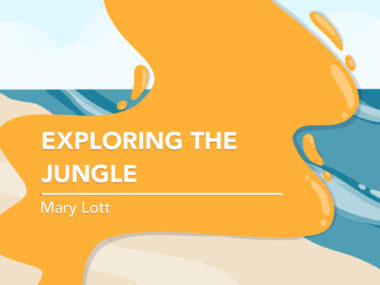Explaining the conundrums caused by cold agglutinin disease
How can one appropriately describe such a rare disease to friends and family?
Written by |

“Mom, how did you know that?”
My youngest child was astonished that I knew of a particular naughtiness they had done. My two older children groaned. They knew my stock answer was coming. They had gone through this phase earlier and had ceased asking me that type of question.
“Easy,” I said. “I know everything.”
For a short period, I was a walking encyclopedia to my children. I always had an answer to their questions. But those halcyon days have long gone.
Today, it isn’t so easy for me to answer questions. My chronic disease — cold agglutinin disease (CAD) — is very rare. Most people haven’t heard of it, and I even have to explain it to some medical personnel.
CAD is an autoimmune hemolytic anemia that occurs when red blood cells (RBCs) are exposed to low temperatures. This causes the RBCs to clump together, which is called agglutination, and then be destroyed. This lack of RBCs leads to a variety of consequences.
The primary consequence is fatigue. I often tell myself, and inadvertently those within hearing distance, that “I’m so tired.” Getting up and brushing my teeth wears me out. I’ve become more sedentary, and now I stretch out routine activities over many hours. Pushing through and getting them done all at once makes me even more tired.
Cold drinks and ice cream
Those nearest and dearest to me are used to seeing me rest in between chores. But they’re puzzled about some of my actions. They’ll make gentle inquiries such as, “Why do you drink iced drinks and indulge in ice cream if you have to keep warm?”
I wondered about this back when I was diagnosed. I didn’t notice my cold food and drinks making any difference in my fatigue levels. I’ve since learned that the digestive system is separated from the circulatory system sufficiently enough that the foods are warmed by our core temperature before mixing with our blood. My family says it doesn’t make sense to them. It doesn’t to me, either. I just accept it.
Taking iron supplements
Another query concerned iron supplements. Don’t I need them? Most anemia indicates a lack of iron in a person’s blood. However, for those of us with CAD, our anemia doesn’t indicate a lack of iron. Rather, it’s caused by the destruction of our red blood cells.
Frequently, we have an abundance of iron. If we had a normal number of RBCs, the iron would be properly carried and circulated to the various bodily systems. As it is, that extra iron is stored in other places throughout our bodies, often in our livers or pancreas. This is another serious condition called hemochromatosis. So taking iron supplements is not only unproductive, it also may be dangerous.
Will exercise help?
Friends and family are also concerned that I don’t get any exercise. My husband attempts to encourage me by telling me he’ll walk with me, and we’ll take it slow, along easy routes. His reasoning is that if I begin in small increments, I can slowly increase the effort until I am able to have meaningful exercise.
He makes sense. But when I barely have enough energy to walk through our house, I don’t believe I can walk farther than that. I’m already exercising to the full amount I can.
How do you know?
I’m also asked how I can tell when hemolysis occurs, causing a loss of red blood cells. My answer is that I can’t, at least not with certitude. I make an educated guess when I’m more fatigued than usual. I also pay attention to the color of my urine. When it’s pink, salmon, or peach colored, I guess it’s because my RBCs are being eliminated.
When that happens, I let my family know so that they understand the situation and can prepare for my withdrawal from activities. I imagine frustration on their faces. I am frustrated, too.
CAD patients must be prepared to answer these and other questions. Not many people understand it, and not many have even heard of it. We, it seems, are the experts in our disease and must explain it to our friends. I hope my answers are sufficient.
Note: Cold Agglutinin Disease News is strictly a news and information website about the disease. It does not provide medical advice, diagnosis, or treatment. This content is not intended to be a substitute for professional medical advice, diagnosis, or treatment. Always seek the advice of your physician or other qualified health provider with any questions you may have regarding a medical condition. Never disregard professional medical advice or delay in seeking it because of something you have read on this website. The opinions expressed in this column are not those of Cold Agglutinin Disease News or its parent company, Bionews, and are intended to spark discussion about issues pertaining to cold agglutinin disease.






Leave a comment
Fill in the required fields to post. Your email address will not be published.